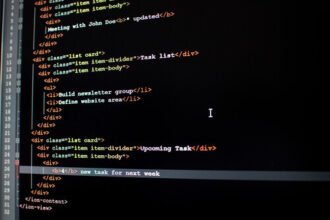Eric Andersen called my attention to a post by Nick Carr entitled “Experiments in delinkification“, in which Carr argues that links embedded in text are distracting, and that we’re better off treating them like the footnotes they evolved from and putting them in a block at the end of the text. It’s an interesting piece, and I see the merits of his argument. Indeed, I remember trying to read a heavily annotated edition of Nabokov’s Lolita, and it was extremely hard to maintain the flow of reading the novel while turning every few seconds to read about every last entomology reference in the text.
Nonetheless, I feel that links supply context, and I’m a fan of keeping context nearby. Indeed, I find that clicking on a link incurs a much lower cognitive cost than flipping to the back of the book, searching for an endnote. I’ve had readers specifically thank me for including links to Wikipedia entries for technical terms. I assume those readers are fully capable of finding those Wikipedia entries themselves, but that they appreciate the convenience of the links.
Some of the commenters on Carr’s post suggest that we use technology to address this tension between preserving the reader’s …
Eric Andersen called my attention to a post by Nick Carr entitled “Experiments in delinkification“, in which Carr argues that links embedded in text are distracting, and that we’re better off treating them like the footnotes they evolved from and putting them in a block at the end of the text. It’s an interesting piece, and I see the merits of his argument. Indeed, I remember trying to read a heavily annotated edition of Nabokov’s Lolita, and it was extremely hard to maintain the flow of reading the novel while turning every few seconds to read about every last entomology reference in the text.
Nonetheless, I feel that links supply context, and I’m a fan of keeping context nearby. Indeed, I find that clicking on a link incurs a much lower cognitive cost than flipping to the back of the book, searching for an endnote. I’ve had readers specifically thank me for including links to Wikipedia entries for technical terms. I assume those readers are fully capable of finding those Wikipedia entries themselves, but that they appreciate the convenience of the links.
Some of the commenters on Carr’s post suggest that we use technology to address this tension between preserving the reader’s focus and supplying nearby context. Specifically, we can use CSS and have a JavaScript button that toggles the link style between visible and invisible. I like the idea of handing readers control of the presentation style, though I still think it’s important to pick a sensible default. At the very least, a document should be self-contained so that a reader can choose if and when to look at the material it cites. The document should also give credit where it’s due, linking to the material it cites in a way that is visible to people and search engines. Beyond that, I think it’s really a matter of author style.
Still, I’m curious what folks here–especially long-time readers–think. Do I link so heavily that it’s distracting? Would it be easier to read my posts if the links were in a block at the end? I write for you, so please let me know how I can make this blog better. I don’t have the resources to conduct cognitive load experiments, but I’m very receptive to comments.







